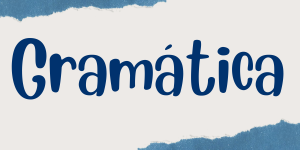VERBOS REFLEXIVOS
The reflexive verbs are when the subject and the object are the same and the action reflects back to the subject. These verb use a reflexive pronoun to indicate the person or persons that are doing the action to herself, himself or themselves.
View the difference between the next two examples:
1. Me lavo las manos I wash my hands
This example is reflexive because the subject (I) and the object (your hands) are the same.
2. Lavo mi coche I wash my car
This example is NOT reflexive because the subject (I) and the object (your hands) are NOT the same.
You can identify the reflexive verbs because they have a reflexive pronoun in their infinitive form.
ie. Lavarse
In order to conjugate reflexive verbs, they need a very specific pronouns called reflexive pronouns.
Reflexive verbs have reflexive pronouns that preside the conjugated verb.
Important note
Unlike, regular personal pronouns that we have used in the past for the other verbs, reflexive verbs cannot be conjugated without the reflexive pronoun.
| Yo- me | Nosotros/as- nos |
| Tú- te | Vosotros/as- os |
| El/ella/usted- se | Ellos/Ellas/Ustedes- se |
The reflexive verbs are conjugated as they the verb would just adding the reflexive pronoun before the conjugated verb
| Yo- me lavo | Nosotros/as- nos lavamos |
| Tú- te lavas | Vosotros/as- os laváis |
| El/Ella/Usted- se lava | Ellos/Ellas/Ustedes- se lavan |
How do you conjugate a reflexive verb?
The infinitive form of a reflexive verb as attached the ending –se. If we were to conjugate the verb ducharse (to take a shower), we would complete the following steps:
- We look at the verb durcharse and we eliminate the ending -se. Having that ending, we know that we need the reflexive pronouns.
- We look at the verb without the ending and we end up with the verb duchar. We know that duchar is a regular verb with an -ar ending.
- Knowing step 2, now we can conjugate accordingly. We add, the reflexive pronouns and then we conjugate the verb as a regular -ar verb
Me ducho
Te duchas
Se ducha
Nos duchamos
Os duchais
Se duchan
* Notice that the reflexive pronoun se, is used for both third person in the singular and plural conjugations.
When we use the infinitive and or present participle (present progressive), the reflexive pronoun can be attached to the beginning of the verb as we have learned, or attached at the end of the verb. Let’s look at some examples;
Using a infinitive verb:
Yo me voy a duchar por la mañana ⇒ Yo voy a ducharme por la mañana
Using present participle
Tú te estás duchando para salir con tus amigos ⇒ Tú estás duchándote para salir con tus amigos
* Notice that when using the present participle, the verb’s accent changes.
PRÁCTICA
Now that you have studied the reflexive verbs, let’s do some practice. Complete the following activities to practice what you have learned.
Ejercicio 1
Ejercicio 2
Ejercicio 3
Ejercicio 4
Ejercicio 5
Licensing and Attribution:
Gramática content on this page was remixed from Español por el mundo by Gemma Morawski and Ani Alcocer, licensed under a Creative Commons Attribution 4.0 International License. Adaptations include voice pronunciations provided by Gemma Morawski and openly-licensed images throughout the H5P flashcards attributed on each card via the H5P editing dashboard and forvo.com . Further adaptations include practice activities created by Gemma Morawski via H5p. Activities were remixed from the following sites; 1.5: Lección 5 – Los verbos reflexivos is shared under a CC BY-NC license and was authored, remixed, and/or curated by Ines Warnock (PDXOpen publishing initiative) .

